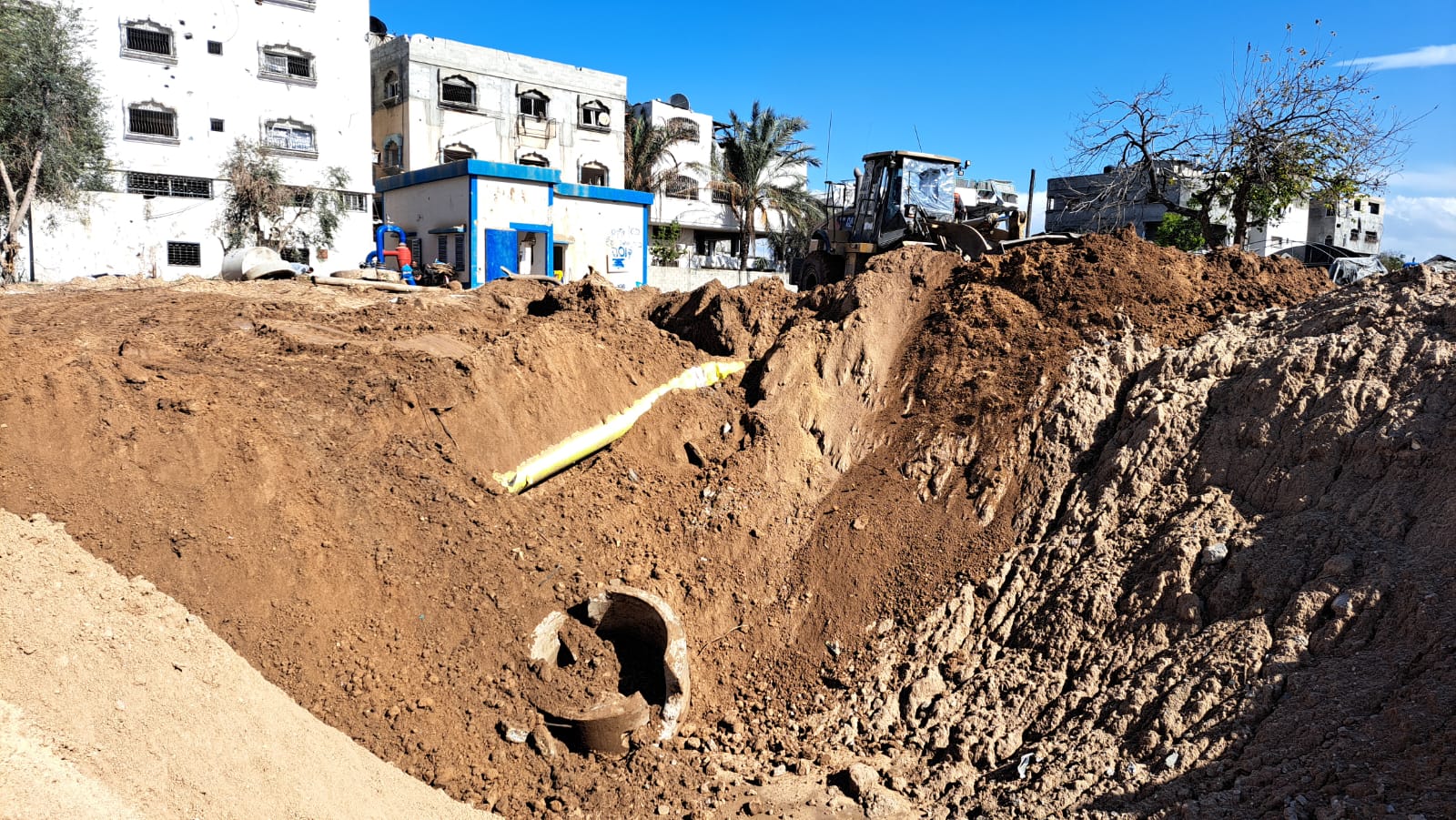2025-04-05
بلدية غزة: أزمة عطش كبيرة تعيشها المدينة بسبب توقف خط مياه "ميكروت"
English below
إعلام البلدية:
أكدت بلدية غزة أن المدينة تعيش أزمة عطش كبيرة بسبب توغل قوات الاحتلال في مناطق شرق المدينة، وتوقف خط مياه "ميكروت" الذي يغذي المدينة بنحو 70% من احتياجاتها الحالية من المياه القادمة من الداخل.
وأفادت البلدية أن الخط يمر عبر المنطقة الشرقية في حي الشجاعية، وأنه توقف عن الضخ مساء يوم الخميس الماضي، مشيرةً إلى أن طواقم البلدية تُجري حاليًا تواصلاً مع الجهات المختصة للسماح لها بالوصول إلى مسار الخط شرق المدينة ومعاينته للتأكد من سلامته، تمهيدًا لإعادة توفير المياه للمواطنين.
وأوضحت البلدية أن خط "ميكروت" كان يغذي المدينة بنحو 20% من احتياجاتها اليومية قبل بدء العدوان وحرب الإبادة في أكتوبر من عام 2023. ولكن بعد العدوان وتدمير معظم آبار المياه، إلى جانب تدمير محطة التحلية المركزية الواقعة شمال غرب مدينة غزة، ونقص الطاقة والكهرباء، أصبحت البلدية تعتمد بنسبة 70% من احتياجها اليومي على مياه "ميكروت" علما بأن هذه المياه يتم توزيع جزءا منها عبر خزانات محمولة على الشاحنات للمناطق التي لا تصلها مياه البلدية.
وكان الاحتلال الإسرائيلي قد تعمد استهداف مرافق المياه خلال العدوان، ما تسبب بأضرار كبيرة وتدمير واسع في الآبار والشبكات، الأمر الذي خلق أزمة حادة في توفير وتوصيل المياه إلى مناطق واسعة من المدينة.
ودعت بلدية غزة المواطنين إلى ضرورة ترشيد استهلاك المياه والتكافل فيما بينهم لتجاوز هذه الأزمة، مؤكدةً أنها ستعمل على توفير المياه بكميات محدودة من مصادر أخرى وفقًا للإمكانات المتاحة، وأنها ستواصل التعاون مع أصحاب الآبار الخاصة ولجان الأحياء في المناطق المختلفة لتوفير الوقود وتشغيل الآبار وتوفير المياه للمناطق المحيطة بها.
وتناشد بلدية غزة المنظمات الحقوقية والدولية ضرورة الضغط على الاحتلال للكشف على الخط المغذي واعادة تشغيله، ومنع وقوع كارثة صحية أو تفشي الأمراض، لا سيما مع بدء ارتفاع درجات الحرارة وازدياد الطلب على المياه.
.
Supplies Around 70% of the City's Current Water Needs
Gaza Municipality: Severe Water Crisis as "Mekorot" Line Shuts Down
The Gaza Municipality has confirmed that the city is experiencing a severe water crisis due to the incursion of Israeli occupation forces into the eastern areas of the city and the shutdown of the “Mekorot” water line, which currently supplies around 70% of Gaza’s water needs from within the occupied territories.
The Municipality stated that the water line passes through the eastern region of Al-Shujaiya neighborhood and has been out of service since Thursday evening. Municipal teams are currently coordinating with the relevant authorities to access the line’s route in eastern Gaza, inspect it to ensure its integrity, and work toward restoring the water supply for residents.
The Municipality explained that the "Mekorot" line previously supplied about 20% of the city’s daily water needs before the aggression and genocide that began in October 2023. However, following the destruction of most water wells, the central desalination plant in northwest Gaza City, and amid severe energy and electricity shortages, the Municipality has come to rely on Mekorot water for 70% of its daily supply. A portion of this water is distributed via truck-mounted tanks to neighborhoods where municipal water networks have been destroyed and are no longer connected to the main supply system.
The Israeli occupation deliberately targeted water infrastructure during the aggression, causing extensive damage and destruction to wells and pipelines. This has created a severe crisis in the provision and distribution of water across large areas of the city.
The Gaza Municipality has urged residents to conserve water and support one another in overcoming the crisis. It confirmed that it is working to provide limited quantities of water from alternative sources, based on available capacities, and will continue cooperating with private well owners and neighborhood committees to supply fuel, operate the wells, and provide water to surrounding areas.
The Municipality also calls on human rights and international organizations to pressure the occupation to allow access to and reactivation of the main water line, in order to prevent a looming health disaster or the spread of disease—especially as temperatures rise and demand for water increases.



